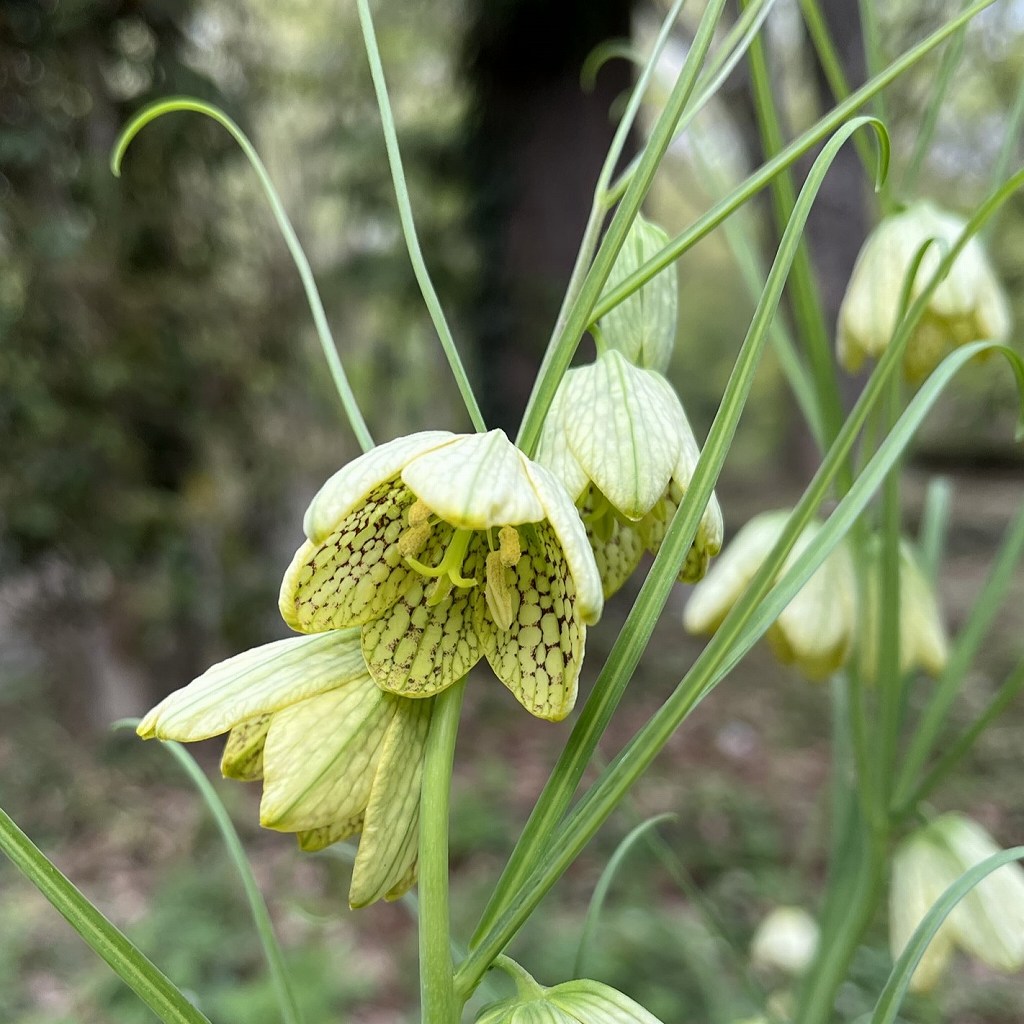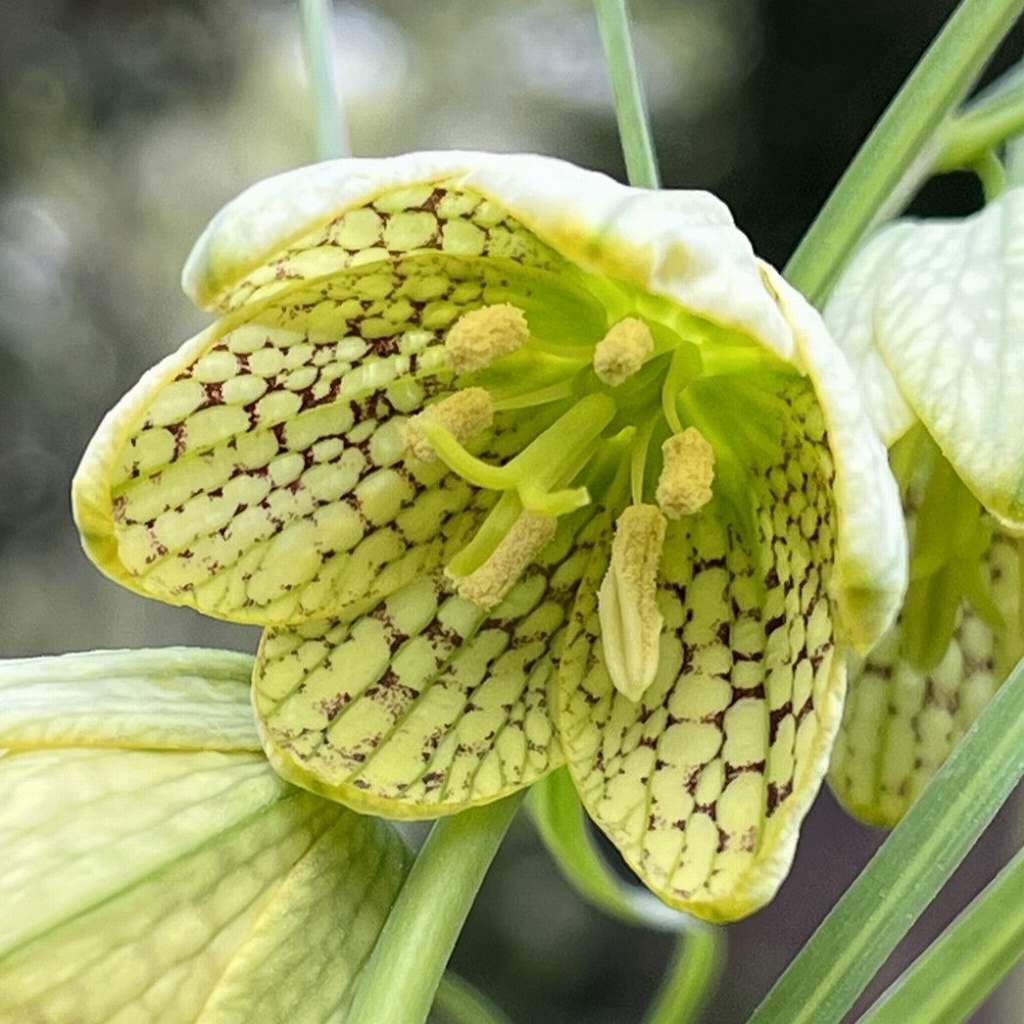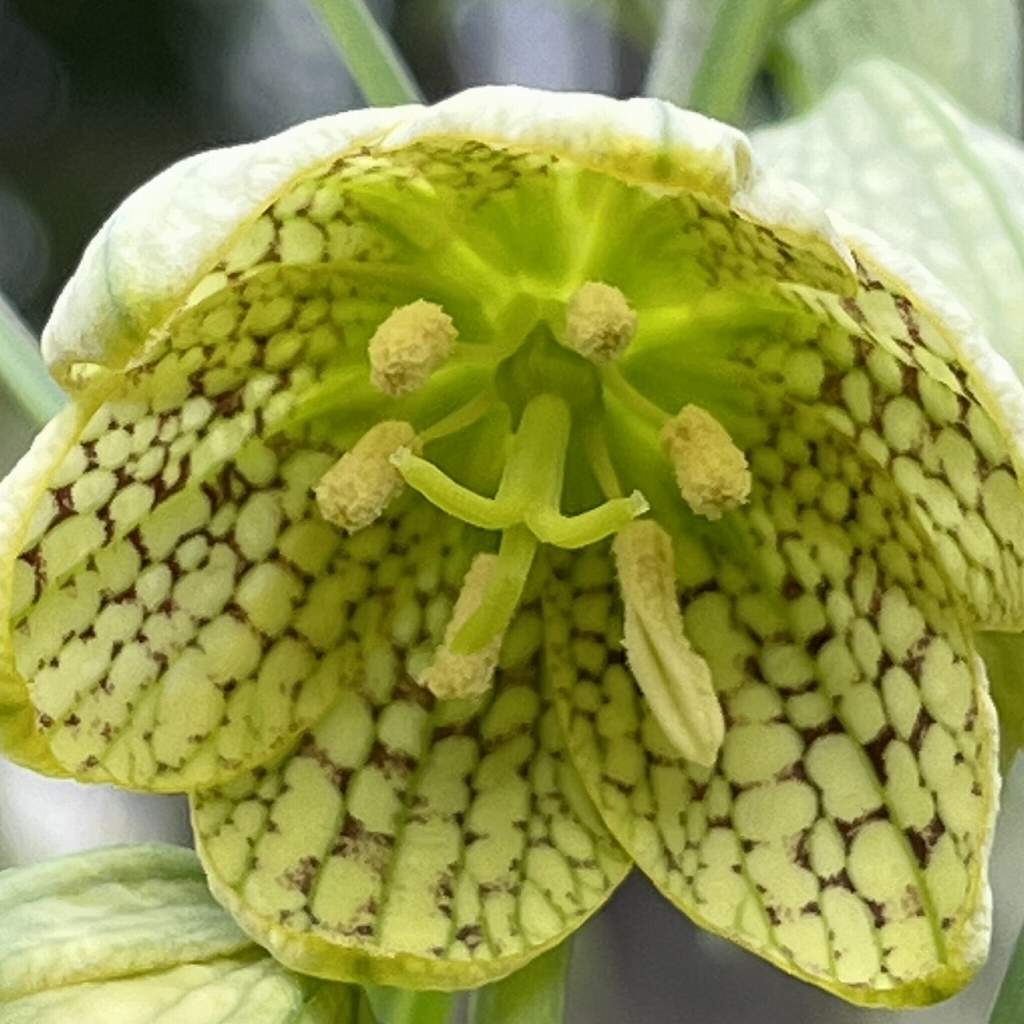アミガサユリの和名の由来は釣鐘形の花の内側に網目模様が入り、「編笠」のようだから。漢名「貝母」は鱗茎が二枚貝に似ているからです。
The Japanese name of Fritillaria Verticillata means that the inside of the bell-shaped flower has a mesh pattern, which looks like a woven hat. The Chinese name means that the bulb resembles a bivalve.
【仮名】アミガサユリ, バイモ, バイモユリ
【和名】編笠百合, 貝母, 貝母百合
【英名】Fritillaria Verticillata, Fritillaria thunbergii
【学名】Fritillaria verticillata
【誕生】04/ 25
【開花】03, 04, 05月
【花色】Green, Yellow




アミガサユリ
アミガサユリの概要
アミガサユリはユリ科バイモ属の多年草。原産地は中国東部で、竹林などの少し湿ったところに自生し、元の時代から薬用で栽培されます。日本へは江戸時代に渡来し、観賞用としても栽培。花言葉は俯いて咲く様子から「謙虚な心」、鱗茎が生薬に用いられるので「才能」などです。
アミガサユリの和名
アミガサユリの和名の由来は、釣鐘形の花の内側に網目模様が入り、あたかも「編笠」のようだから。編笠は藁などで編み込まれた昔の被り物です。花は葉の付け根から下を向いて咲き、花弁が6枚、雄しべが6本、雌しべが3裂。花後は蒴果を結び、熟すと裂けて種子を落とします。
アミガサユリの学名
アミガサユリのラテン語の属名フリティラリアは「サイコロを入れる筒」という意味で、花冠の形状に由来。世界中に130種くらいあります。種小名ベルティシラータは「輪生の」という意味。茎は下の方の葉が輪生~対生、上の方の葉が互生です。葉は披針形で、先端が巻きひげ状。
アミガサユリの漢名
アミガサユリの別名バイモは漢名「貝母」の音読み。これは鱗茎が二枚貝に似ていて、母貝が子貝を抱いているように見えるからです。鱗茎は白色の球形で、肥厚した大小2枚の鱗片が合着。鱗片は澱粉質で、半透明の薄皮で覆われます。夏の間は地上部が枯れ、地下部の鱗茎で休眠。
アミガサユリの利用
アミガサユリは生薬「貝母」として、乾燥した鱗茎の粉末が去痰、鎮咳、催乳、鎮痛、止血などに用いられます。含有成分はフリチリン、フリチラリン、ベルチシンなどのアルカロイド。副作用として、呼吸や中枢神経の麻痺、血圧低下などが生じる恐れもあるため、注意が必要です。
Fritillaria Verticillata
Fritillaria Verticillata is a perennial herb of the family Liliaceae. It is native to eastern China, where it grows naturally in moist areas such as bamboo forests, and has been cultivated for medicinal purposes since ancient times. It was introduced to Japan in the Edo period and cultivated as an ornamental plant. The language of flowers is “modest heart” because of how it blooms with its head down, and “talent” because the bulb is used as a herbal medicine.
The Japanese name of Fritillaria Verticillata means that the inside of the bell-shaped flower has a mesh pattern, which looks like a woven hat. The woven hat is an old headgear woven with straw. The flower blooms downward from the base of the leaf, and has 6 petals, 6 stamens, and 3 lobed pistils. After flowering, they form capsules, and when ripe, they split open and drop the seeds.
The Latin genus name Fritillaria, which means “dice tube”, derives from the shape of the corolla. This genus has about 130 species in the world. The species name Verticillata means “whorled”. The lower leaves of the stem are whorled to opposite, and the upper leaves are alternate. The leaves are lanceolate with tendrils at the tips.
The Chinese name of Fritillaria Verticillata means “shellfish mother”, because the bulb resembles a bivalve, and the mother shell looks like it is holding the baby shell. The bulb is white and spherical, and two large and small thickened scales are joined together. The scales are starchy and covered with a translucent thin skin. During the summer, the above-ground parts wither and the bulbs in the basement become dormant.
Fritillaria Verticillata is used as a crude drug “shellfish mother”, and the dried bulb powder is used for expectorant, antitussive, milk-promoting, analgesic, and hemostasis. Contains alkaloids such as fritillin, fritillarin and verticin. Caution should be exercised as side effects may include breathing, paralysis of the central nervous system, and a drop in blood pressure.


